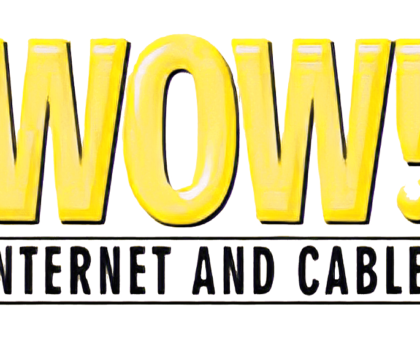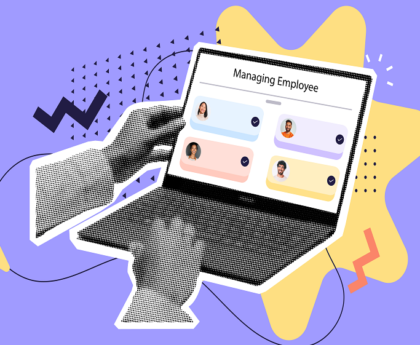In 2025, businesses have started to embrace new technologies to manage distributed teams, as remote and hybrid work models continue to be the norm. Tracking tools provide organizations with an easy means of managing productivity, security, and workflows. With such capabilities comes great responsibility, however. It is important to promote trust and positive workplace culture by adopting fair employee monitoring practices. Below, we discuss how companies can encourage respect for privacy while efficiently adapting responsible employee monitoring measures that will improve team performance by Controlio software.
The Evolution of Employee Surveillance
Work-from-home and hybrid models of working became the norm after 2020, and these unprecedented times catalyzed a growing need for monitoring tools. Industry studies show that more than 80% of U.S. companies track computer and email usage. These tools enable managers to ascertain that tasks are done, secure critical information, and uncover productivity lags. However, without clear guidelines, monitoring is bound to break trust, escalate anxiety, and lower employee satisfaction.
Striking a balance between employee privacy and business needs comes into play in 2025. Ethical monitoring includes transparency and consent, making sure that the Controlio app helps productivity and not surveillance. Businesses can adopt a collaborative approach to monitoring that is beneficial to both employees and employers by prioritizing ethical practices.
Why an Ethical Approach in Monitoring is Important
There can be numerous negative impacts of unethical monitoring, including secretive surveillance and over-scrutinizing. For instance, a study conducted in 2024 revealed that 56 percent of employees felt stressed because of surveillance at the workplace. Many employees started reducing breaks, which amplified work-related stress due to constantly being watched. Such practices not only have dire implications for mental health but also undermine productivity. Instead of engaging in meaningful and impactful work, employees prioritize showcasing busywork. Even more concerning, such invasive measures can create legal complications, particularly for countries governed by strict privacy laws such as GDPR.
Trust is an essential aspect, and ethical monitoring fosters precisely this. Transparency about how the monitoring system works and the rationale behind the monitoring encourages acceptance and motivates employees to view monitoring as a growth tool. Policies that incorporate transparency enable employees to detach from the feeling of micromanagement and promote a culture where respect and accountability become key values.
Key Principles for Ethical Monitoring
To ensure monitoring is done responsibly, businesses must follow these core principles:
- Transparency:Use clear language regarding what is being monitored—apps, emails, or idleness—and provide a rationale for it. Employees must understand the data collection and storage process.
- Consent:Employees’ consent must be captured before monitoring tools are put in place. This can be captured at onboarding or in updated workplace policies.
- Relevance:Only activities related to work must be monitored. Tracking personal devices and personal non-work-related communication breaches privacy protocols.
- Data Security:Data collected must be stored in encrypted systems, and access must be restricted to authorized personnel only.
- Feedback:Employees should be taught through data how to improve productivity or manage their workload by analyzing monitoring data and sharing feedback with them.
For instance, the Controlio app functions with customizable monitoring settings that focus on work-related metrics to uphold ethical standards while providing valuable productivity insights.
Benefits of Ethical Monitoring
If carried out correctly, employee monitoring can be of great benefit. First, it increases productivity due to the identification of bottlenecks or inefficient processes. Managers now have data to improve workflows, aid struggling team members, and offer various forms of support. Secondly, it improves resource allocation. Time tracking helps reveal how time is spent, allowing businesses to optimize staff or project timelines.
Third, ethical monitoring strengthens security. Companies can avoid breaches or unauthorized sharing by preventing access to sensitive data. This protects both the organization and clients. With such monitoring, employees are more likely to engage with the organization. Employees who view monitoring as a tool to help them grow are more motivated and committed to the organization. This is why transparent monitoring boosts engagement.
Best Practices for Implementation
To ensure that business practices are ethically monitored, companies should do the following:
- Develop a Clear Policy: Come up with an employee monitoring policy that clearly describes the tracking entailed, why it is done, and how data will be used in a written document. This should be presented during onboarding and annual reviews.
- Choose the Right Tools: Use software that provides privacy-oriented features, such as Controlio, which allows monitoring and secure storage of the collected data. Tools that promote covert tracking and collecting excessive data without consent should be avoided.
- Engage Employees: Employees should be selected as participants in the discussion on monitoring. They need to know how such measures will benefit them, for instance, in ensuring equal/balanced workloads or lowering administrative tasks.
- Provide training. Workshop such materials as reports and monitoring tools with employees to enhance collaboration and ease anxiety.
- Review Regularly: Ensure that audits are conducted on the monitoring practices in relation to the applicable laws, compliance, and company values. Gather feedback from employees to improve policies.
Addressing Employee Concerns
In the first instance, employees may be concerned about monitoring leading to an invasion of privacy or micromanagement. To alleviate these worries, explain that monitoring is done for business reasons only and is confined to work-related aspects. Provide employees with their own data so that they can check productivity levels and experiment with time management techniques.
Active listening remains imperative. Organize meetings or accept questions anonymously and address them. Encouraging such communication goes a long way toward clearing fears and cultivating trust.
Conclusion
Monitoring employees in 2025 is an important feature of management concerning remote and hybrid teams; however, this should be done with ethics and transparency as a priority. Businesses can reap rewards from monitoring with due respect to employee privacy by using the Controlio app together with the principles of consent, relevance, and data security. Monitoring enhances productivity and security while ensuring that trust and collaboration are key components in the workplace. By ensuring fairness and unobstructed circulation of information, monitoring becomes advantageous for both employers and employees.





